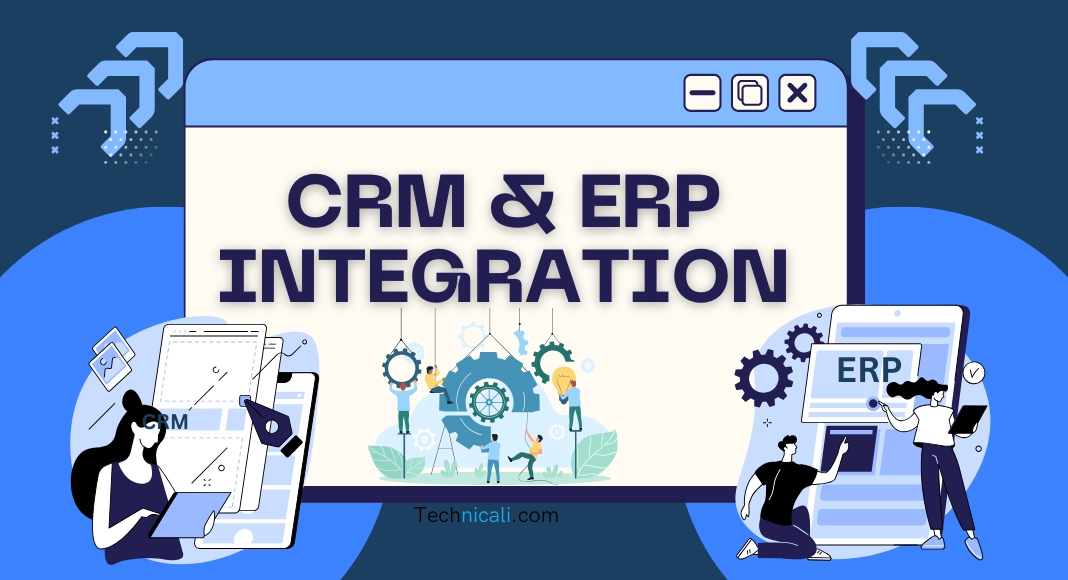In the ever-changing Software as a Service (SaaS) verse, businesses, CEOs, and managers always search for ways to level up their game, fuel growth, and strengthen customer relationships. And you know what’s crucial? The smooth integration of Customer Relationship Management (CRM) and Enterprise Resource Planning (ERP) systems. In this awesome blog post, we’re going to dive deep into the wild world of CRM and ERP integration with Integration Platform as a Service (iPaaS), spilling the beans on the sweet benefits, challenges, and best practices that can empower SaaS businesses to rock it.
Contents
Understanding the Need for CRM and ERP Integration

Before we get all tangled up in the nitty-gritty of iPaaS, let’s take a moment to wrap our heads around the awesomeness of CRM integration and ERP integration. CRM systems manage customer relationships, while ERP systems handle all sorts of business, like finance, inventory, and HR. When we bring them together, we’re talking about having crucial customer data right at our fingertips to make smarter moves and smooth out operations.
What is iPaaS (Integration Platform as a Service)
iPaaS, or Integration Platform as a Service, acts as the ultimate bridge between CRM and ERP systems. It makes data and processes flow seamlessly. Consider it the technological rebel that connects these essential components of a SaaS business, making communication and collaboration a breeze.
Role of iPaaS in Bridging the Gap
iPaaS solutions, the ultimate bridge builders! They break down the walls between CRM and ERP systems, bringing them together on a unified platform. Not only do they supercharge operational efficiency, but they also give businesses the power to deliver a personalized customer experience. So, forget the status quo and embrace iPaaS solutions. It’s time to step up from the outdated systems and drive growth and success.
iPaaS Solutions for CRM to ERP Connection
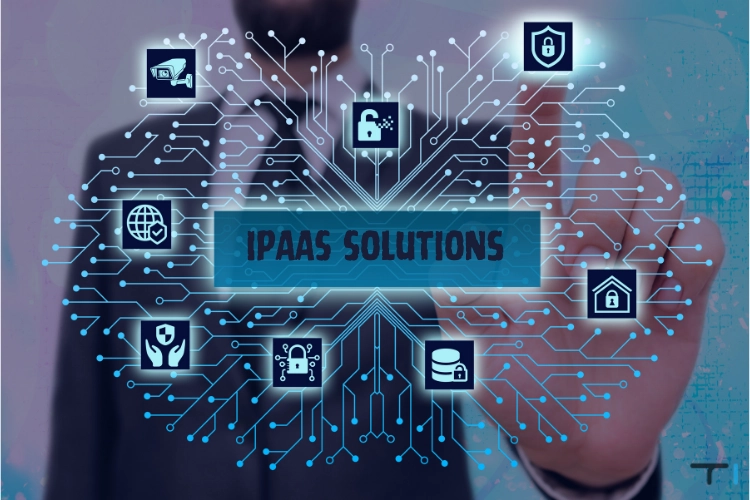
Now that we’ve got the importance of iPaaS down let’s dive into the solutions it brings to the table for organizations connecting CRM to ERP systems. They tackle the challenges faced by SaaS businesses, like crappy customer retention and the struggle of giving customers that personal touch.
Benefits of Using iPaaS for CRM and ERP Integration
- Scalability: As businesses grow, their IT infrastructure gets crazier! Traditional methods mean more hardware and Software, which is costly and a drag. But check out iPaaS; it’s cloud-based and can scale up or down effortlessly with your business. No need to break the bank! Add more apps or data? iPaaS has got your back; no extra resources are needed. It’s not just about size; it’s about capabilities, too. iPaaS keeps up with new tech and trends, keeping your integrations cool and effective.
- Customization: Every business is unique and has its integration needs. iPaaS platforms come to the rescue with a high degree of customization, letting businesses tailor their integrations to match their wildest requirements. Whether hooking up with a niche application, pulling off mind-bending data transformations, or doing funky data mapping between systems, iPaaS solutions can handle it like a boss. And guess what? They even offer pre-built connectors for popular SaaS applications, making the integration process a breeze and keeping the custom coding monsters at bay. So, let’s rebel against complexity and embrace the iPaaS revolution!
- Security: In today’s digital age, data security is very important and iPaaS solutions have your back with security measures to keep your data safe during integration. They use encryption to lock down your data in transit and at rest, access controls to keep out the snoops, and follow all those industry standards and regulations.
- Cost-Effectiveness: Integrating applications and data can be a real headache, my friend. You know, it’s all about the manual effort, custom coding, and playing around with multiple point-to-point integrations. But fear not! iPaaS swoops in to save the day, giving you a single platform for all your integrations. No more manual labor, no more errors messing things up. Just accurate data and better decisions. And the best part? iPaaS is cloud-based, so say goodbye to pricey hardware or software investments. It’s quite cost-saving, my friend.
iPaaS vs. Traditional Integration Methods
Forget about the old-school integration methods like point-to-point or hub-and-spoke models. They’re such a pain! You need mad coding skills and loads of time to set up and maintain them. And guess what? They’re as rigid as a fossil! Good luck adapting to changes in business or tech trends with those dinosaurs.
But fear not! Integration Platform as a Service (iPaaS) saves the day. It’s like the cool kid on the block, offering a streamlined and user-friendly approach to integration. No more coding magic is required! iPaaS integration platforms have a visual interface that makes connecting apps and mapping data flows a breeze. Its integration made it easy, even for the non-techies among us.
And here’s the cherry on top: iPaaS platforms have pre-built connectors for popular cloud applications, CRM, and ERP systems. Talk about a time-saver! These connectors handle all the mind-numbing data translation so you can focus on more important things.
Oh, and did I mention iPaaS is cloud-based? That means you can access it anytime, anywhere. It’s like having integration superpowers in your pocket. It can scale up or down to fit your business needs. Talk about flexibility!
So, say goodbye to the old ways and embrace the awesomeness of iPaaS. It’s the future of CRM and ERP integration, my friend!
Key Features of iPaaS Solutions
iPaaS solutions have various features to facilitate seamless data management in CRM-ERP integration. Here are some key features:
- Data Mapping: Check out this awesome feature that lets users boss around data, telling it how to move from one system to another. It’s like a data shape-shifter, transforming itself into the perfect format for the receiving system and keeping all integrated platforms in sync.
- Workflow Configuration: iPaaS solutions let you design and automate wicked workflows between all your integrated systems. Say goodbye to manual effort and hello to real-time data updates across the board. Let’s streamline those processes and against the mundane!
- Real-Time Synchronization: With iPaaS, data gets synced up between all integrated systems in real-time. No more outdated info floating around! It’s all about having the freshest and most accurate data for the right decisions.
- Advanced Monitoring Capabilities: iPaaS solutions are like your personal spy with superpowers. They give you the scoop on all your data flows, spot any issues or bottlenecks, and keep your integrations running like a well-oiled machine. It’s like having a secret weapon to conquer the integration.
How to Integrate CRM with ERP Using iPaaS
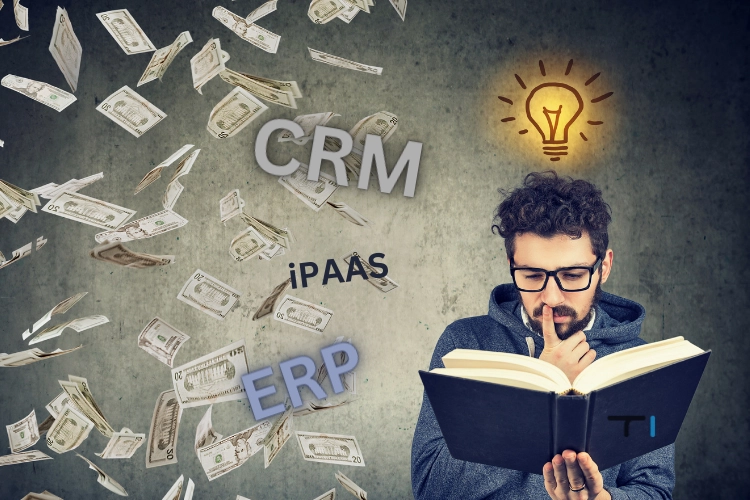
Now, let’s take a step-by-step approach to guide you through integrating CRM with ERP using iPaaS. This practical guide will help you navigate the complexities and ensure a successful implementation.
Step-by-Step Guide to Setting Up Integration
Identifying Integration Goals
So, when you want to set up an integration process, it all starts with figuring out your integration goals. What do you want to achieve by combining data sharing with your CRM and ERP systems? Maybe you’re after better data accuracy, smoother processes, happier customers, or more efficient overall operation. By nailing down these goals from the get-go, you can create a laser-focused integration strategy.
Selecting the Right iPaaS Provider
Picking the right iPaaS provider is a crucial step in the integration process. You have to consider how well they jive with your existing CRM and ERP systems, how easy their platform is to use, and how best their customer support is. Oh, and don’t forget to check out their track record and rep in the industry. You gotta find a provider that can meet your biz’s specific needs and help you slay those integration goals.
Mapping Data and Processes
Once you’ve picked your fancy iPaaS provider, Now comes the fun part – mapping out all the data and processes that need to be integrated. We gotta identify those key data points and workflows in your CRM and ERP systems affected by this integration. Think customer info, sales data, inventory levels, order processing workflows, and more. Don’t worry, we got this! By meticulously mapping out this info, we’ll ensure this integration enhances your operations and gives you all those benefits you’re after.
Configuring Workflows
After you’ve mapped out your data and processes, it’s time to dive into the wild world of configuring workflows within the iPaaS platform. Get ready to break some rules and show those CRM and ERP systems who’s boss! We’re talking about transferring data like a pro and ensuring those workflows align with your business processes.
Testing and Deployment
Before you unleash the integration into the wild, thoroughly test it to hunt down any pesky bugs or errors. It’s like running simulations or pilot tests to ensure everything behaves as expected. Once you’ve tamed those issues and are confident in its skills, deploy it. But keep a close eye on it in the early stages because, you know, it’s like training a wild beast to perform tricks.
Remember, setting up an enterprise integration is no walk in the park. It takes careful planning and execution. Follow these steps, and you’ll create an integration to make your business a lean, mean, efficient machine.
Common Challenges and How to Overcome Them
- Data Conflicts: Data conflicts can be a real pain when you’ve got the same info showing up in different formats across systems. Imagine one system saying “John Smith” and another saying “Smith, John.”To tackle this headache, businesses should get their act together and establish a standardized format for all data. Make sure this standard is followed across all integrated systems.
- Synchronization Issues: These issues pop up when changes are made in one system, but other systems are left in the dark. To fight back, businesses must use the real-time synchronization powers of their iPaaS solution. All changes made in one system get automatically updated in every other connected system.
- Complexity of Integration: Integrating multiple systems can be a real headache, especially when they speak different languages or have secret codes. But fear not! With an iPaaS solution armed with pre-built connectors and data mapping superpowers, you can stick it to the system and effortlessly connect those systems.
- Security Concerns: Regarding integrating systems, things can get pretty dicey with all that sensitive business data flying around. You don’t want those sneaky threats getting their grubby hands on your precious info, right? Businesses must have an iPaaS solution with some serious security mojo. We’re talking data encryption about rock-solid access controls. So, stay one step ahead of those wannabe hackers and keep your data locked up tight!
- Lack of Technical Expertise: Some businesses might not have the tech know-how to handle integrations. So, what’s the move? Partner with a vendor or consultant who’s all about that integration life. They’ll bring the expertise and support you need for a calm sailing integration. Don’t let the challenges get to you! Get the full benefits of your CRM and ERP systems.
Key Factors to Consider When Choosing iPaaS

- Hybrid Integration: In the wild world of hybrid business environments, you must pick an iPaaS solution that effortlessly blends cloud-based and on-premise systems. There are no compromises, no boundaries, just seamless integration.
- System Complexity: Let’s talk about the complexity of your IT landscape. If you’ve got a bunch of systems using different protocols and data formats, you better find yourself an iPaaS solution that can handle all that craziness. Don’t let your tech stack boss you around!
- Service Offering: Check out the range of services the iPaaS solution offers. We’re talking data integration, process integration, and API management; ensure these services align with your business’s integration needs.
iPaaS CRM-ERP Synchronization
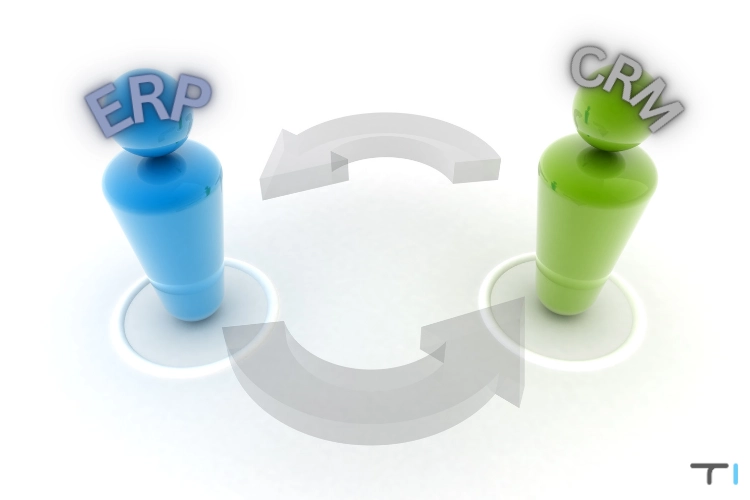
Synchronization is a critical aspect of CRM and ERP integration. There are two primary approaches: real-time data synchronization in-time and batch synchronization.
Real-time vs. Batch Synchronization
So, here’s the deal: real-time synchronization is like having a personal assistant who updates everything for you instantly. You make a change in one system, and bam! It’s reflected in the other. This is perfect for fast-paced businesses, like e-commerce companies, where you must keep inventory levels and customer info up-to-date to make sales reps avoid mishaps.
On the other hand, we’ve got batch synchronization. It’s more laid-back, like updating data at your own chosen intervals. Once a day, once a week, whatever floats your boat. This one’s great when you don’t need those real-time updates. Also, it saves on resources by reducing the number of data transfers. Perfect for businesses with tons of data to handle.
Now, when choosing between the other two systems, you gotta think about your needs. How much data you’re dealing with, how accurate you need things to be, and what resources you’ve got. Choose wisely!
Data Consistency and Accuracy
Ensuring data is consistent and accurate across CRM and ERP systems is crucial for integration. Trust me, you don’t want to deal with the chaos that comes from wonky data. It can mess up your operations, leave your customers hanging, and screw up all your reports.
iPaaS Solutions can help you keep your data in check with their data validation and cleansing superpowers. Validation is like giving your data a good old check-up to ensure it meets the rules before transferring it. And cleansing? Well, that’s like fixing up all the errors and inconsistencies.
Handling Data Conflicts
Data conflicts can be a real pain in the CRM and ERP systems. Imagine updating a customer’s address in both systems simultaneously – chaos! But fear not; iPaaS platforms have your back with their nifty conflict resolution mechanisms. These can be programmed to follow the rules or do fancy things when a conflict arises. They might give the CRM system the upper hand or give you a heads-up so you can manually sort things out.
Monitoring and Reporting
iPaaS solutions got your back with monitoring and reporting tools to track how your CRM and ERP integration is doing. These insights help you spot bottlenecks, optimize workflows, and keep that data integrity in check.
Implementing iPaaS for ERP and CRM Data Unification
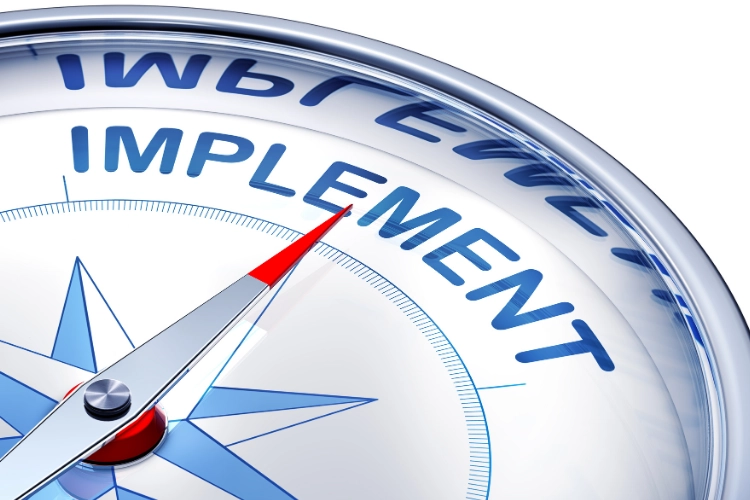
Planning and Strategy
So, you want to nail that iPaaS implementation for CRM and ERP data unification; it all starts with a plan and strategy. First, identify your rockstar stakeholders – IT pros, data analysts, and business leaders who’ll bring their unique expertise. Trust me, with this dream team, your integration of cloud services will be on fire!
Now, set some clear objectives. What problems do you want to tackle? What benefits are you going to get? By defining your goals upfront, you’ll ensure your integration game is strong and purposeful.
Last but not least, let’s talk timeline. Give yourself breathing room for system config, data mapping, testing, and deployment. And expect a few bumps along the way – it’s all part of the wild ride!
Deployment and Training
Once you get your plan and strategy sorted out, it’s time to dive into the deployment phase. This is where you configure the iPaaS platform to connect your CRM and ERP systems, map those data fields, and set up any necessary workflows or processes. And hey, don’t forget about training! Make sure your team knows how to rock that iPaaS platform like pros. Maybe some fun training sessions, tutorials, or hands-on workshops? The goal is to ensure everyone feels confident and super skilled with the new system.
Post-Implementation Maintenance
Maintenance becomes a big deal once you’ve got that integration up and running well. You gotta keep an eye on how it’s performing, squash any bugs that pop up, and tweak things as your business evolves. Regular system audits are like detective work, catching problems before they blow up. And don’t forget those routine updates and upgrades – they keep your integration running like a well-oiled machine. Got someone cool in charge of all this? It’ll make your life easier, trust me.
Measuring ROI
Measuring the return on investment (ROI) is a crucial part of assessing the success of your CRM and ERP integration. This involves evaluating various aspects, such as:
- Operational Efficiency: Has this fancy integration made your business operations more efficient? Like, has it finally put an end to mind-numbing manual data entry or magically streamlined all those tedious workflows? I’m just curious, you know, because who wants to follow all those boring rules anyway?
- Business Process Improvement: Has the integration worked magic on your business processes? It’s like having a turbo boost for order processing, inventory management, and customer service.
- Customer Relationships: Has the integration made your customer relationships even better? It could show up as happier, more loyal, or customers who stick around longer. And, who doesn’t love a higher customer lifetime value?
- Business Growth: So, did this integration help the business grow? You know, like more sales, fatter profits, or even taking over more of the market?
By considering these factors in-depth, you and your clients can gain a comprehensive understanding of the impact and benefits brought about by the integration. This will help validate your investment and provide valuable insights for future integration projects.
Conclusion
As tech keeps evolving, the future of CRM and ERP system integration with iPaaS is off the charts! Businesses embracing this integration will rock the competitive landscape, deliver mind-blowing customer experiences, and achieve insane growth. Integrating CRM and ERP systems with iPaaS is the best move to take your SaaS business to the next level. By tackling the pain of lousy customer retention and the struggle of personalized experiences head-on, you unleash the full potential of your organization. And remember, iPaaS brings scalability, customization, security, and cost-effectiveness, making it the ultimate solution for today’s SaaS businesses.
